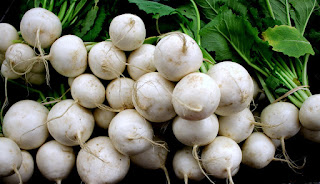Community Shared Agriculture
I’ve been counting down the days until May 2, because that’s when I’m due to receive my first CSA (Community Shared Agriculture) share. Looking forward to spring, I committed money to support this local farm by buying a subscription to their 30-week growing season. Each week, I’ll receive a box of seven different vegetables, two kinds of fruit, and a dozen eggs. The farm also has options for adding bread, milk, mushrooms, herbs, and more.
I’ve become concerned about the consolidation of agriculture – both in this country and globally – and I wanted to make a personal commitment to supporting the sustainability of local agriculture by investing in a farm. I’ll also continue to shop at the amazing farmers markets we have in Mercer County. My CSA delivers, but others need to be picked up at a farm or a market. Some allow you to chose your vegetables from their harvest, in others you get what you get. Some work with a debit system: invest $XXX.XX at the beginning of the season, and shop down your balance. Many have a work component: you sign up to work at the farm for a few hours, or to help with the CSA distribution. I did this one year, and it’s a fun way to meet veggie-loving neighbors.
When I open a box full of just-harvested local produce, I feel rich! I feel lucky to have access to this abundance. I feel a connection with the hard-working people who produce the food that I enjoy. Some other things I’ve learned and experienced over the years with CSAs:
I enjoy turnips and rutabagas. I had never bought these on my own, but getting them in a CSA share added them to my repertoire.
One season, the farm we got a winter share from had an abundance of eggs, and we got 3 dozen in one week, plus more the next. I learned to make frittatas!
Have you ever heard of husk cherries? I hadn’t. At the time I was living with a house full of roommates and we had a tasting together. They are in the same family as a tomatillo, and have a subtle grape flavor, with tropical notes like a mango. That year I also got some purple bell peppers, almost too pretty to eat (I did eat them, of course).
I’m game to try almost anything, but I have the gene that makes cilantro taste like soap. If I get cilantro in a share, I always give it away to neighbors.
In addition to joyful, I sometimes – especially at first – felt overwhelmed. What do I do with kohlrabi? More zucchini? I’ve gotten better at improvising with the produce I received, but I also turn to cookbooks to create meal plans to make sure none of the abundance goes to waste. My favorite is Vegetable Literacy: Cooking and Gardening with Twelve Families from the Edible Plant Kingdom, with Over 300 Deliciously Simple Recipes by Deborah Madison. The recipes are delicious, and I also love all the information she includes about each vegetable: how it grows, which parts you can use. Along with the recipes, she writes good accompaniments for each vegetable, so this is a great reference for a gardener or someone like me with a CSA. For other similar books, you can search for “Cooking (Vegetables)” and “Seasonal Cooking” in our catalog. I also recommend Six Seasons: A New Way with Vegetables by Joshua McFadden and Local Dirt:Seasonal Recipes for Eating Close to Home by Andrea Bemis.
Want to read more about agriculture in the United States?
Foodtopia: Communities in Pursuit of Peace, Love, & Homegrown Food by Margot Anne Kelley “Ever wonder if there's a better way to live, work, and eat? You're not alone. Here is the story of five back-to-the-land movements, from 1840 to present day, when large numbers of utopian-minded people in the United States took action to establish small-scale farming as an alternative to mainstream agriculture. Then and now, it's the story of people striving to live freely and fight injustice, to make the food on their table a little healthier, and to leave the planet less scarred than they found it.”
Transfarmation: The Movement to Free Us From Factory Farming by Leah Garcés “The story of factory farmers, rescued farm animals, and rural communities standing up to big corporations and constructing their own new world that will change the way we eat.”
Or do you want to grow your own?
Grow Great Vegetables in New Jersey by Marie Iannotti “Get the Inside Dirt, New Jersey! Grow Great Vegetables in New Jersey is the ultimate guide to growing food in the Garden State. This must-have guide to growing vegetables, fruits, and herbs provides you with insider advice on climate zones, average frost dates, and growing season details. Information includes details on sun, soil, fertilizer, mulch, water, and the best varieties for your region. A garden planning section helps with design and crop rotation, and monthly lists explain what to do from January through December. In-depth profiles of fifty best edibles help ensure a can't-miss harvest.”
-Corina, West Windsor Branch

Comments
Post a Comment